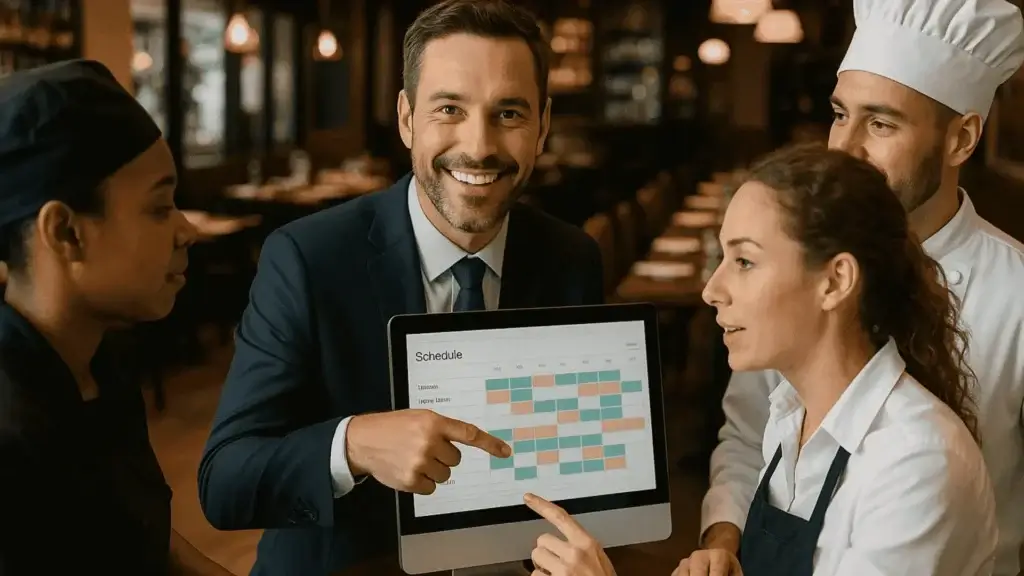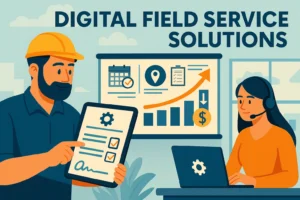Benefits of employee scheduling software
In the vibrant realm of restaurants, few recognize that behind a smooth operation lies the careful art of managing shifts. Every dining rush, last-minute reservation, and bustling evening relies on having the right person in the right place exactly when needed. Traditional methods like pen and paper or basic spreadsheets might suffice when teams are small, but as establishments grow and menus expand, these approaches can lead to errors, shift overlaps, and wasted time. That's where a modern approach to employee scheduling makes a significant difference.Digital employee scheduling tools not only simplify the task of assigning shifts but also boost overall productivity. By leveraging technology, these systems automate many of the tedious administrative tasks, freeing managers to focus on creating memorable customer experiences. With smart features that factor in everything from shift templates and employee availability to personal shift preferences and roles, these programs are transforming how restaurants operate. They contribute to content staff and refined operations by preventing costly mistakes and streamlining the day-to-day hustle.
Streamlining Restaurant Operations
One of the biggest advantages of using employee scheduling is its power to streamline busy restaurant operations. When every moment counts, automating the creation of detailed shift templates and schedules saves invaluable time. Instead of spending hours poring over spreadsheets, managers can simply input core parameters—such as labour forecasting data or integration with POS systems—and let the software craft an efficient roster. This not only reduces the time spent on manual planning but also significantly decreases the chance of overlap or errors.Digital scheduling tools work by considering employee availability, roles, and even requests for overtime control. For instance, a manager might accidentally double-book a head chef or schedule someone during an anticipated rush, but with employee scheduling software, these issues become a thing of the past. The system cross-checks each piece of information to ensure that staff are optimally deployed, keeping the restaurant running even during peak times.Real-time notifications and compliance alerts embedded within these tools ensure that every team member remains informed about any schedule changes. This level of instant communication makes it easier to manage last-minute alterations, reducing the stress that often accompanies traditional scheduling methods.
Improving Staff Morale with employee scheduling software
When workers feel that they have a say in the creation of their work hours, they naturally derive more satisfaction from their jobs. Well-designed employee scheduling software empowers staff by offering avenues for shift swapping, availability requests, and easy updates. This approach not only smooths out the scheduling process but also builds trust within the team, as everyone can see how decisions are made and thus plan accordingly.Consider a server who needs to attend an important family event. With a user-friendly drag-and-drop scheduler, they can easily request a shift change or swap with a colleague. This flexibility works wonders in balancing personal time and work responsibilities, easing stress and enhancing overall job satisfaction. When employees see their needs mirrored in the schedule, mutual respect grows, often reflecting in enhanced customer care and improved feedback from guests.Transparent scheduling also enables managers to integrate additional elements, such as overtime control and compliance alerts, ensuring that every staff member’s workload is fair. Over time, this enhanced engagement leads to higher retention, fewer unscheduled absences, and a workplace culture where everyone feels appreciated.
Enhancing Productivity and Efficiency
At its core, the goal of any business tool is to improve productivity, and modern employee scheduling software does exactly that. These systems are designed with user-friendly interfaces that allow managers to quickly set up and adjust schedules. Whether it's boosting the number of hands during a busy dinner or scaling back during slower periods, precise resource allocation fuels better service. An added bonus is that the software often integrates labour forecasting algorithms to predict when extra support might be necessary.Restaurant managers can also benefit from the software’s ability to analyze data. Historical dining trends, peak hours, and staff performance indicators help create a schedule that optimizes every shift. With features such as POS integration and real-time analytics confirming the data, the system can signal when to add more servers or close down a shift, significantly reducing wasted labour costs.Additionally, with an automated drag-and-drop scheduler at hand, errors like overlapping shifts or understaffing are swiftly flagged. This proactive adjustment ensures that the entire team works smoothly, thus boosting both productivity and the quality of customer service.
Choosing the Right Scheduling Software
Features to Consider
Choosing a scheduling system for your restaurant means identifying the features that best suit your needs. It’s not just about creating a digital roster—it’s about acquiring a tool that syncs with your current systems while accommodating your future growth. Key features to watch for include:
- Real-time Updates: Ensuring every modification is instantly reflected so that everyone remains informed.
- Mobile Access: Allowing both managers and staff to review and acknowledge changes no matter where they are.
- Payroll Integration: Syncing work hours with your existing payroll system, helping to avoid data entry mishaps.
- AI Capabilities: More advanced tools even use labour forecasting to predict busy shifts and adjust rosters ahead of time, working hand in hand with features like compliance alerts to keep everything in check.
Investing in a system with these features transforms scheduling into a dynamic management hub. It even paves the way for automation in other areas such as POS integration and overtime control, ensuring that your restaurant operates at peak efficiency at all times. Such a tool not only saves money but also forms the backbone of a more predictive and smart work environment.
Ease of Use and Onboarding
User-friendliness ranks high when it comes to choosing scheduling software. A system that is clear and simple—featuring intuitive navigation and straightforward layouts—quickly earns the team’s trust. A drag-and-drop scheduler, coupled with an interface that uses vivid colour codes for different shifts, makes it easier for staff to adapt without wasting time on convoluted processes.Often, these systems come with trial periods, video tutorials, and detailed guides. Testing the software during slower times can reveal any hidden issues before the full rollout. Quick fixes, interactive demos, and good customer support can ease the transition from old, manual methods to the modern world of employee scheduling.When a scheduling tool integrates modern features like compliance alerts and overtime control right out of the box, it becomes easier for the entire team to embrace these changes. Ultimately, choosing a software solution that is simple to understand and use makes all the difference in keeping operations smooth and staff content.
Room for Growth
As your restaurant expands, so will your scheduling demands. It’s important to invest in a solution that can grow with you—one that manages everything from small teams to multiple locations seamlessly. Scalability is not just about handling more shifts; it’s about supporting complex scheduling needs as you branch out.For instance, a restaurant that starts as a single outlet but later opens additional branches will need a centralized tool capable of managing several rosters simultaneously. A scalable system can integrate new modules—like advanced labour forecasting or POS integration—and adapt to more nuanced scheduling patterns over time without needing a complete overhaul.Furthermore, a flexible solution sets the stage for future upgrades. With restaurant technology evolving, having a software platform that can integrate extra features, including enhanced compliance alerts or sophisticated overtime control, ensures that your operational backbone remains stable and forward-thinking.
Implementing Scheduling Software
Training and Onboarding Your Team
The journey to fully benefiting from modern employee scheduling starts with proper onboarding. Once the right tool is chosen, it’s crucial to introduce it to every team member in a way that alleviates any fears of change. Detailed training sessions, comprehensive tutorials, and ongoing support make it easier for staff to learn the ins and outs of the new system.Many providers understand the hurdles of switching from tried-and-true methods, so they offer robust support through video walkthroughs, step-by-step guides, and even in-person training if needed. Organizing short workshops during quieter shifts can help everyone get hands-on practice with features like a drag-and-drop scheduler or accessing shift templates.A key part of this rollout is fostering an open conversation. Encouraging team members to flag any issues or ask questions strengthens trust and builds a shared commitment to making employee scheduling work for everyone. This transparent process can smooth the changeover, making the transition to a digital solution both seamless and rewarding.
Monitoring Performance and Collecting Feedback
After implementation, the next step is regular monitoring and gathering feedback. Constant check-ins help measure if the system is meeting expectations. Setting up routine surveys, quick post-shift meetings, or feedback sessions allows staff and managers to share their experiences. This feedback loop is essential for fine-tuning the software and addressing pain points such as slow mobile updates or unclear shift assignments.It’s wise to track key metrics like actual staffing levels against planned rosters, as well as any improvements in service. Data-driven insights, often enhanced by tools like labour forecasting dashboards, ensure that the impact of the software is both visible and measurable. Reviews may reveal that features like overtime control and compliance alerts need minor adjustments, prompting quick tweaks from the support team.Maintaining open communication about the software’s performance leads to ongoing improvements that keep the scheduling process efficient and responsive to your restaurant’s evolving needs.
Adapting to the Unexpected
The restaurant industry is full of surprises—from seasonal rushes to unplanned staff absences. Modern employee scheduling software is built to handle these shifts with speed and adaptability. Whether it's an unanticipated shortage during a busy night or a sudden shift in customer flow, the tool quickly adjusts rosters without missing a beat.For example, if multiple employees call in sick on a hectic evening, the system can instantly identify available team members. With features such as compliance alerts and real-time updates, the software helps to rearrange shifts and reassign duties within minutes. This nimble response is critical to maintaining service quality and keeping customers satisfied during unpredictable times.Moreover, many modern scheduling platforms use historical data and trends to anticipate busy periods, incorporating labour forecasting to prepare for expected spikes. This proactive stance means that even before the rush begins, extra hands are lined up based on data-driven predictions. Adapting to change quickly not only minimizes disruption but also ensures that customer service remains top-notch, no matter what surprises the day holds.
Conclusion
Switching to digital employee scheduling software can truly transform how your restaurant manages its shifts, enhancing both service quality and staff satisfaction. By automating complex tasks like creating shift templates and managing overtime control, the process becomes faster and more precise. The positive ripple effects include streamlined daily operations, fewer scheduling mistakes, and an upbeat workplace where employees feel recognized and valued.Beyond the obvious time savings, modern employee scheduling software delivers measurable benefits like improved productivity and stronger team communication. By integrating features such as POS integration, compliance alerts, and a drag-and-drop scheduler, the software creates a robust framework for a restaurant's daily operations and long-term growth.In today's ever-changing food scene, investing in a solid employee scheduling system provides a competitive edge. Not only does it help mitigate potential errors and reduce labour costs, it also fosters a culture where every team member can flourish. Implementing such a tool today lays the groundwork for a vibrant future where both management and staff grow together.Ultimately, the decision to transition to an automated employee scheduling tool is a wise investment for any bustling restaurant. With clear advantages in streamlining shift plans, enhancing communication, and supporting business growth, this modern approach promises long-term benefits. So, take the leap and allow your restaurant to benefit from technology that truly understands the heartbeat of a dynamic dining environment.
Daria Olieshko
A personal blog created for those who are looking for proven practices.

 English (US)
English (US)  English (GB)
English (GB)  English (CA)
English (CA)  English (AU)
English (AU)  English (NZ)
English (NZ)  English (ZA)
English (ZA)  Español (ES)
Español (ES)  Español (MX)
Español (MX)  Español (AR)
Español (AR)  Português (BR)
Português (BR)  Português (PT)
Português (PT)  Deutsch (DE)
Deutsch (DE)  Deutsch (AT)
Deutsch (AT)  Français (FR)
Français (FR)  Français (BE)
Français (BE)  Français (CA)
Français (CA)  Italiano
Italiano  日本語
日本語  中文
中文  हिन्दी
हिन्दी  עברית
עברית  العربية
العربية  한국어
한국어  Nederlands
Nederlands  Polski
Polski  Türkçe
Türkçe  Українська
Українська  Русский
Русский  Magyar
Magyar  Română
Română  Čeština
Čeština  Български
Български  Ελληνικά
Ελληνικά  Svenska
Svenska  Dansk
Dansk  Norsk
Norsk  Suomi
Suomi  Bahasa
Bahasa  Tiếng Việt
Tiếng Việt  Tagalog
Tagalog  ไทย
ไทย  Latviešu
Latviešu  Lietuvių
Lietuvių  Eesti
Eesti  Slovenčina
Slovenčina  Slovenščina
Slovenščina  Hrvatski
Hrvatski  Македонски
Македонски  Қазақ
Қазақ  Azərbaycan
Azərbaycan  বাংলা
বাংলা 

